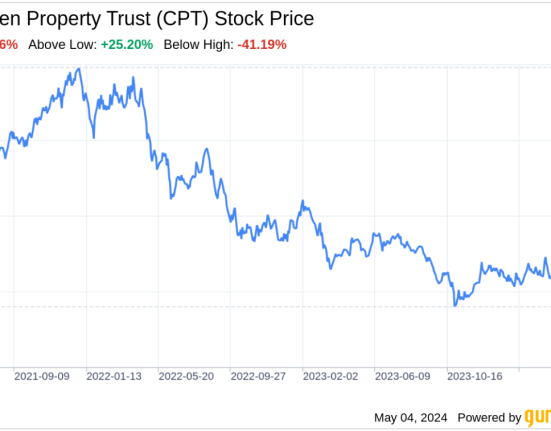In 2023, the real estate sector showed resilience amid changing trends. Global economic recovery drove up demand for residential properties in India, thanks to low interest rates and a preference for smart living and luxurious ownerships. With India’s status as one of the world’s fastest-growing economies propelled by private spending and capital buildup, the real estate sector remains a top investment choice.
Typically, Indian households allocate 77% of their assets to real estate as this asset class offers potential for high growth, strong returns, and secure income streams. Moreover, with SEBI’s new directives on fractional ownership and small REITs, the sector is poised further for significant expansion in 2024.
However, navigating the real estate market and choosing right investment outlets as per current government regulations and rates, can be daunting, especially for newcomers.Also Read: Income tax strategies for real estate investors: Maximising deductions and minimising liabilities
This article explores diverse real estate investment options suitable for various investor profiles and risk appetites.
1. Rental properties
The traditional approach involves acquiring residential properties for rental income. While straightforward, this method requires significant upfront capital and ongoing maintenance costs. Before investing, ensure the property is free of legal issues. Acquisition options include leasing, outright purchase, or financing through loans.
Notably, there’s a rising trend of investing in luxury rental properties, especially in major Indian urban centers such as Mumbai, Delhi, and Bangalore. Industry data indicates that luxury residential real estate in these cities consistently surpasses other traditional assets, boasting an annual price growth of 4% to 7%.
2. Holiday homes and house flipping
Affluent buyers are expanding their property portfolios beyond primary residences to include lucrative second homes. In India, the demand for secondary residences has skyrocketed post-pandemic, reaching a staggering $1.394 billion by the close of 2021—an impressive 88.63% surge from pre-COVID levels.
Combined with strategies like house flipping, where properties are renovated for increased resale value, Indians are capitalizing on their second homes by turning them into holiday retreats, drawing significant tourist interest.Also Read: 5 essential strategies for maximising REIT investments in FY 24-25
3. REITs and ETFs
Exchange Traded Funds (ETFs) and mutual funds provide indirect exposure to real estate by investing in related assets. Options include ETFs focused on real estate stocks, such as publicly traded builders, or those invested in REITs (Real Estate Investment Trusts).
REITs function similarly to mutual funds by gathering investor capital to purchase income-producing assets. These assets generate rental income, which is then distributed to investors as dividends. Investing in REITs offers various benefits such as immediate liquidity, affordability, regulatory protection, tax advantages among others. With dividends constituting a significant portion of profits(90%), REITs provide a steady income stream, often tax-exempt.
4. Fractional ownership of commercial real estate
This innovative approach involves multiple investors pooling funds to jointly purchase a commercial property. This reduces individual investment costs and risk exposure, while allowing shared rental income. Industry experts forecast significant growth in this segment with fractional ownership properties in India projected to reach $8.9 billion by 2025, growing annually at 10.5%.
Commercial properties typically offer higher rental yields compared to residential options. A 25 lakh investment in fractional ownership could potentially generate ₹2 lakh in annual rental income (calculated at 8-12 percent rental yield), coupled with at least ₹1.25 lakh in capital appreciation per year, contributing to wealth creation and improved monthly cash flow.Also Read: Your Questions Answered: I want to invest in Nifty Realty Index. Please elaborate on it and how it is taxed?
Choosing the right option
The optimal investment option depends on various factors, including your available capital, desired liquidity preferences, preferred cash flow regularity, and risk tolerance. Owning, leasing, and flipping properties generally require substantial capital and experience in the real estate market.
ETFs provide high liquidity and lower costs but may not offer monthly dividends and might require selling shares to realise returns.
REITs and fractional ownership, though relatively new, are gaining traction as they provide access to the lucrative commercial real estate (CRE) sector for retail investors. While CRE offers good returns, it traditionally requires high capital investment.
Fractional ownership presents a lucrative opportunity with potential annual rental yields between 8 to 12 percent and Internal Rate of Return (IRR) ranging from 13 to 17 percent. Prime properties and retail complexes in business hubs like Gurugram that have emerged as one of the most prospective markets in real estate lately, offer both steady rental income and prospects for capital growth.
All this suggests that fractional ownership of commercial real estate could yield higher and more stable returns in the long run compared to other options and deserves serious consideration for those seeking to diversify their investment portfolios and build long-term wealth.
Aankush Ahuja, Founder and CEO FOIP
Unlock a world of Benefits! From insightful newsletters to real-time stock tracking, breaking news and a personalized newsfeed – it’s all here, just a click away! Login Now!







